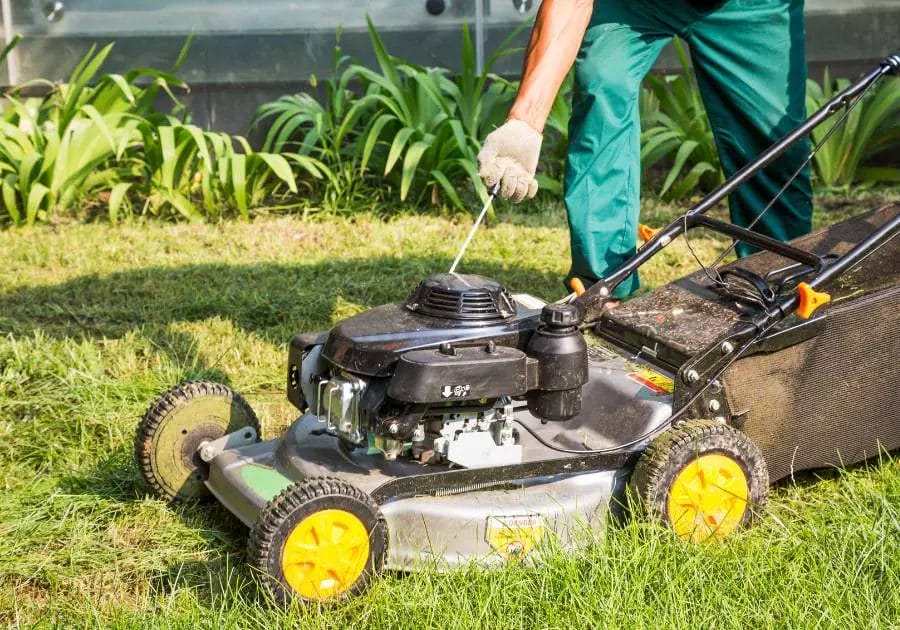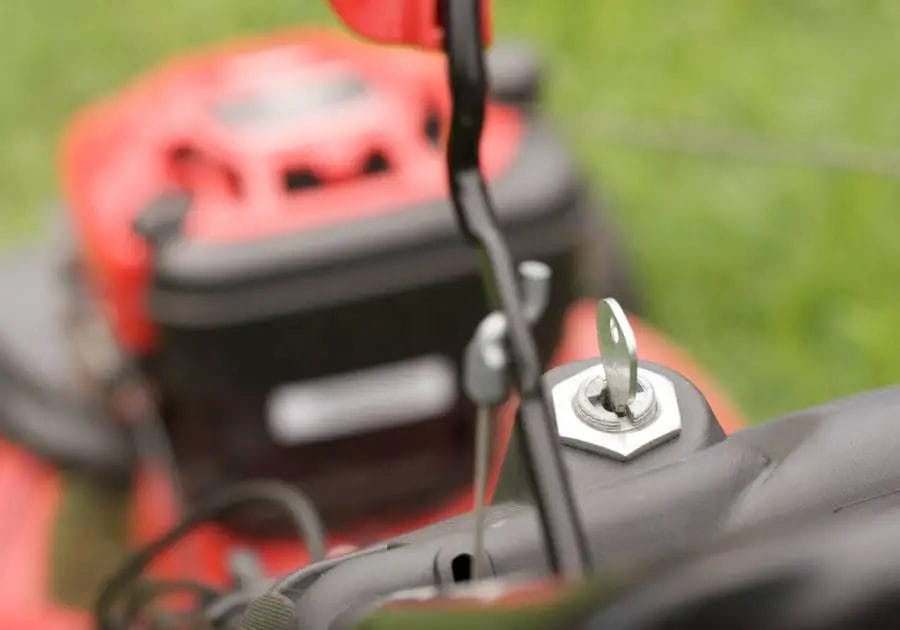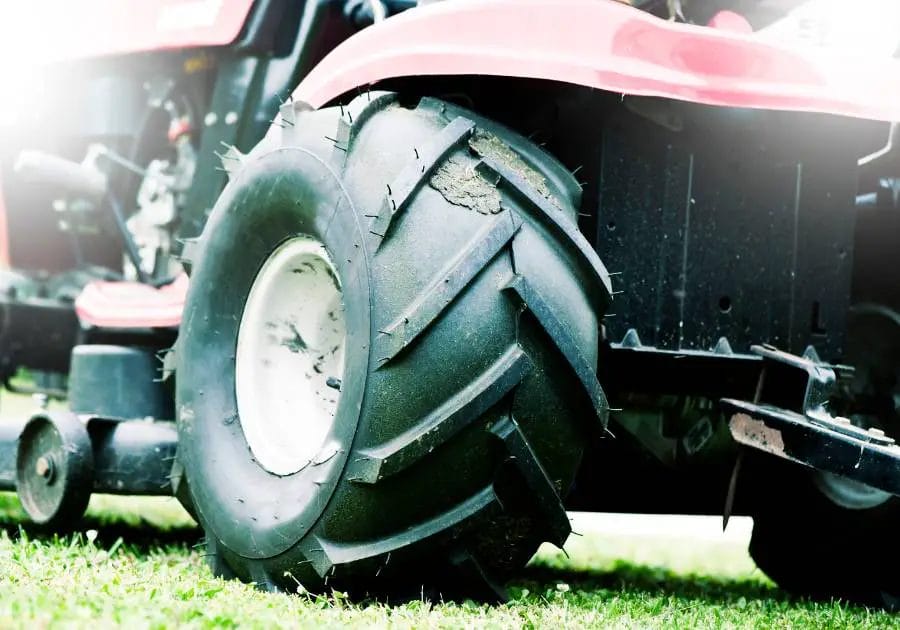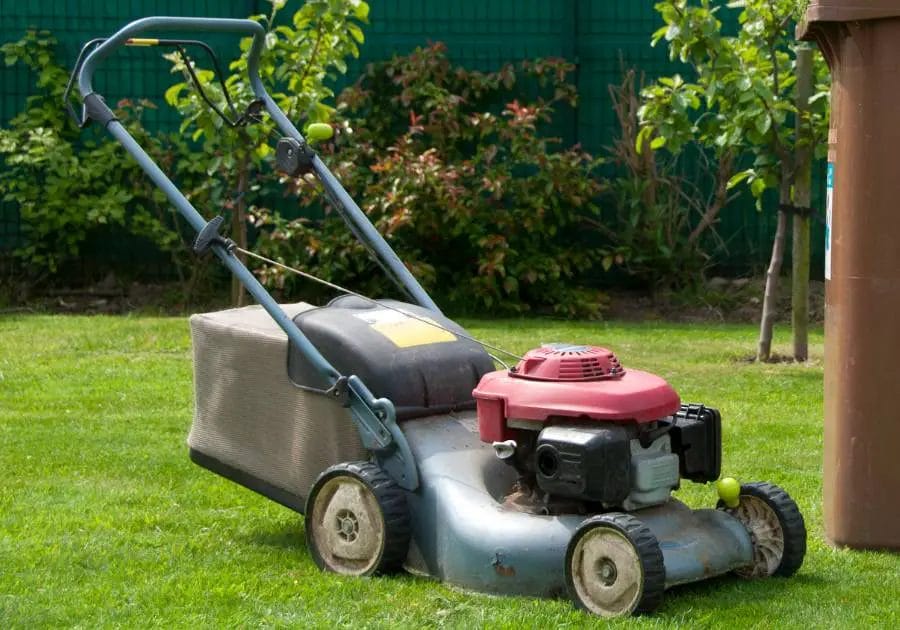If you can smell fuel coming from your lawn mower and it won’t start, it can be quite worrying. Have I written off my mower?
The good news is, it’s unlikely!

If you flood your lawn mower, there are a few things you can do to fix it. The first step is to drain the excess fuel from your mower. The cause of flooding can be a few things – it’s good to know what these are!
I won’t be the first to flood a lawn mower, I certainly won’t be the last! I found it quite scary the first time it happened. However, I now know how to fix the issue – I also know to stop it from happening!
I’m going to share that knowledge with you below!
When a lawn mower engine is flooded, the number one cause is overuse of the choke so this is where I’d recommend you start!
For absolute dedicated instructions on your lawn mower model, you will want to consult your manual on the process of starting your lawn mower.
However, the general process is to engage the choke, you will only want to do this for a maximum of five pulls.
After five pulls, you should set the choke to “Half” or “Off” before continue to pull.
Why?

If you don’t switch the choke to either position and keep pulling then the carburetor and ignition chamber will become flooded with fuel. Now, this is actually something you can smell easily and if you do, you should stop what you’re doing!
It’s important to note, that you can get the engine running, even with the choke off.
That isn’t the only reason why a lawn mower floods, it could also be down to the carburetor being overprimed before pulling the starting cord – this is more relevant to push lawn mowers and not something you need to worry about with a ride-on lawn mower.
I will say that amount of times you need to push the priming bulb will depend on the model of lawn mower. In my experience, you’ll be looking at around 3 to 5 times after the bulb is filled with fuel.
As you have probably realised, if you don’t start your lawn mower properly, you can cause it to flood. However, even if you start your lawn mower properly, you could still cause it to flood if the fuel you’re using is old.
The reason being is that old fuel can collect moisture and prevent it from igniting. Rather than it igniting, more fuel will be pumped into the carburetor as you pump. As this happens, the smell will become noticeable.
So if you’re just breaking out your lawn mower after a winter off, you may want to think about draining the fuel and putting in some fresh.
[Looking for winter storage tips? Look here]
You will also get the same result if the spark plug in the lawn mower is old. A corroded or old spark plug won’t be able to produce the necessary spark needed to ignite the engine and as you continue to try, the engine becomes flooded.

The first thing to note is that once the engine is flooded, your mower won’t be starting until the fuel has drained – and you should try!
Again, different manufacturers will recommend different times but the average seems to be around 15 minutes to let the mower sit.
A key thing to remember is that you need to keep the mower on level ground while leaving it to drain.
If you want to speed the process up, you can remove the air filter. What this will do is increase the rate of evaporation by providing a more direct air passage to the carburetor.
Another thing worth doing is to remove the spark plug. This will provide ventilation to the combustion chamber.
Only do this for about 5 minutes and then pop the spark plug back in.
Keep the air filter off and try to start the lawn mower – do this with the choke off.
Should your lawn mower start, you should stop it and pop the air filter back on.
This is all relevant to those who have a push lawn mower. If you have a ride-on mower, you’re just going to have to let it sit for 15 minutes.
Before starting your lawn mower after a while in storage, change the fuel.
If your lawn mower is a push mower then this can be done as you’re giving your carburetor and combustion chamber time to clear.
I’d always advise removing your spark plug to inspect it. This gives you the chance to inspect it and if you need to change it, you are at least finding out before you flood the engine!
If you do flood your engine with fuel then it could be worth using starter fluid. As you can probably guess from the name, this helps to start an engine.

You should spray this into the air intake port – you will need to remove the air filter to do this.
When it comes to starting your lawn mower, keep the choke off. If at this point, your lawn mower switches on, it’s going to burn the excess fuel.
If it’s burning excess fuel, don’t be surprised to see white smoke coming off it – that’s normal! It shouldn’t go on for too long.
[Other reasons why you lawn mower might be giving off white smoke]
There we have it! No more flooding your lawn mower, right?! 🙂
Flooding your lawn mower happens. The best thing you can do is not to panic and follow the steps above.
Preventive is better than cure (or at least that’s what they say anyway!), so try to follow some of the tips above to prevent any flooding.
Happy mowing!